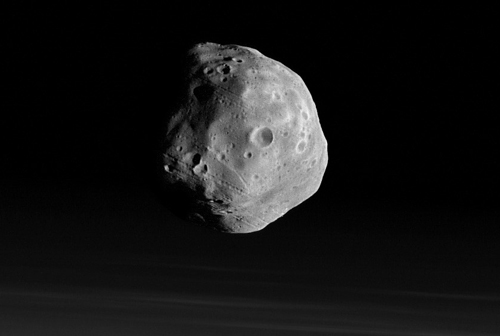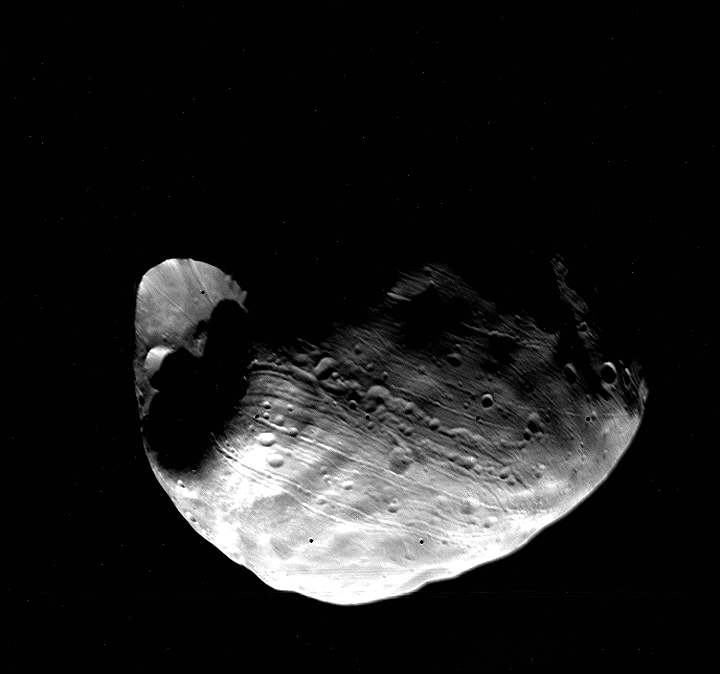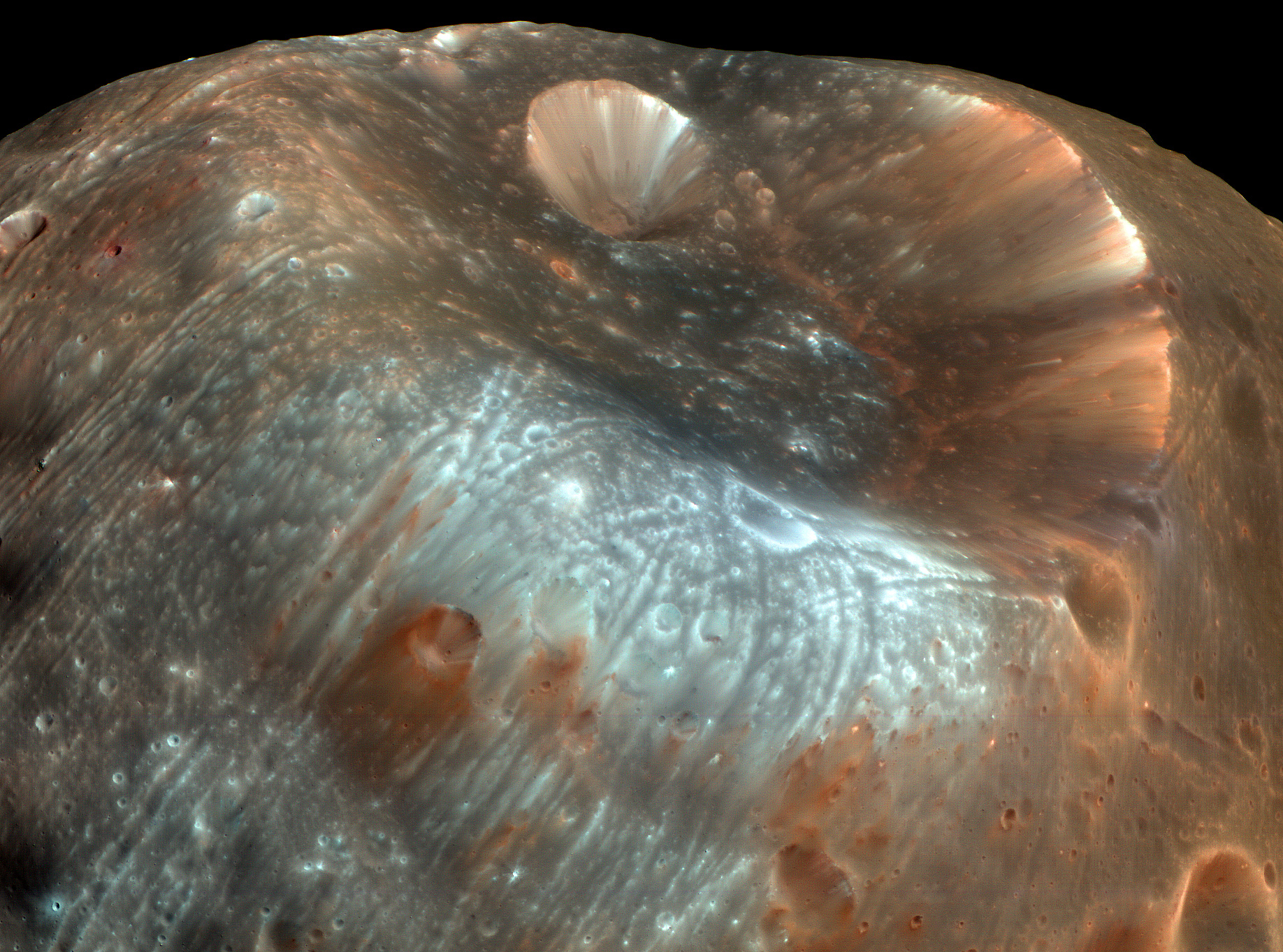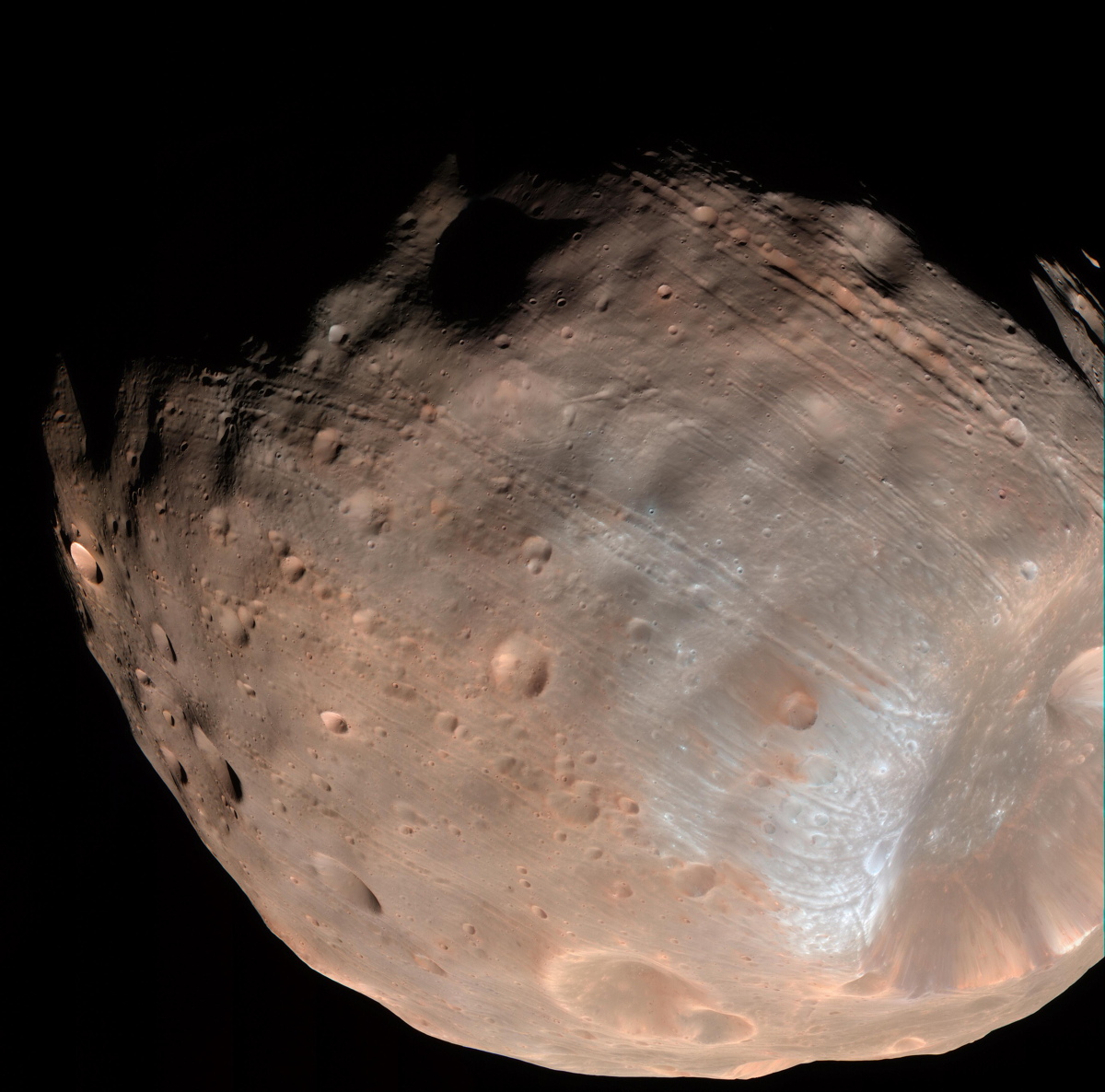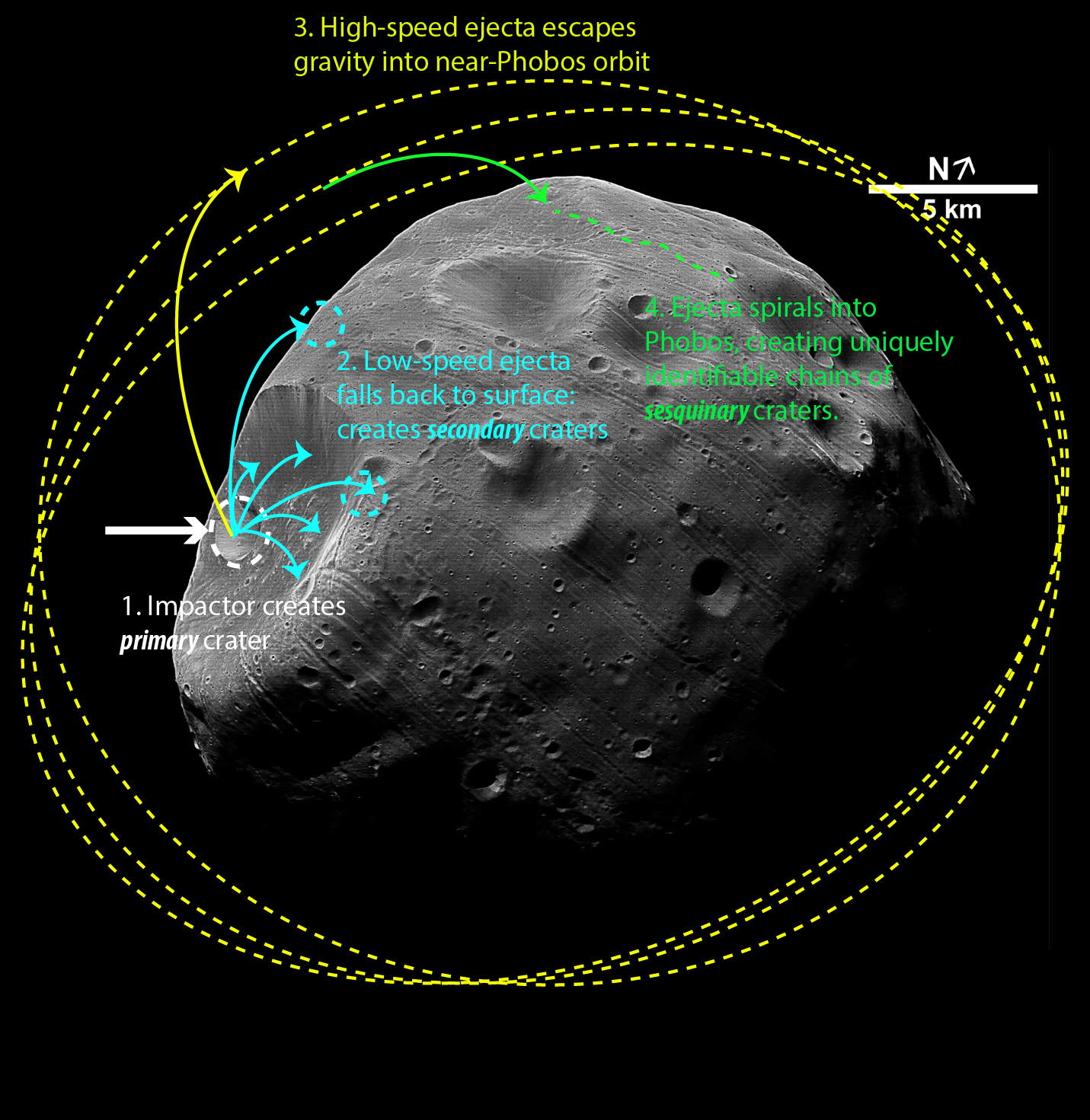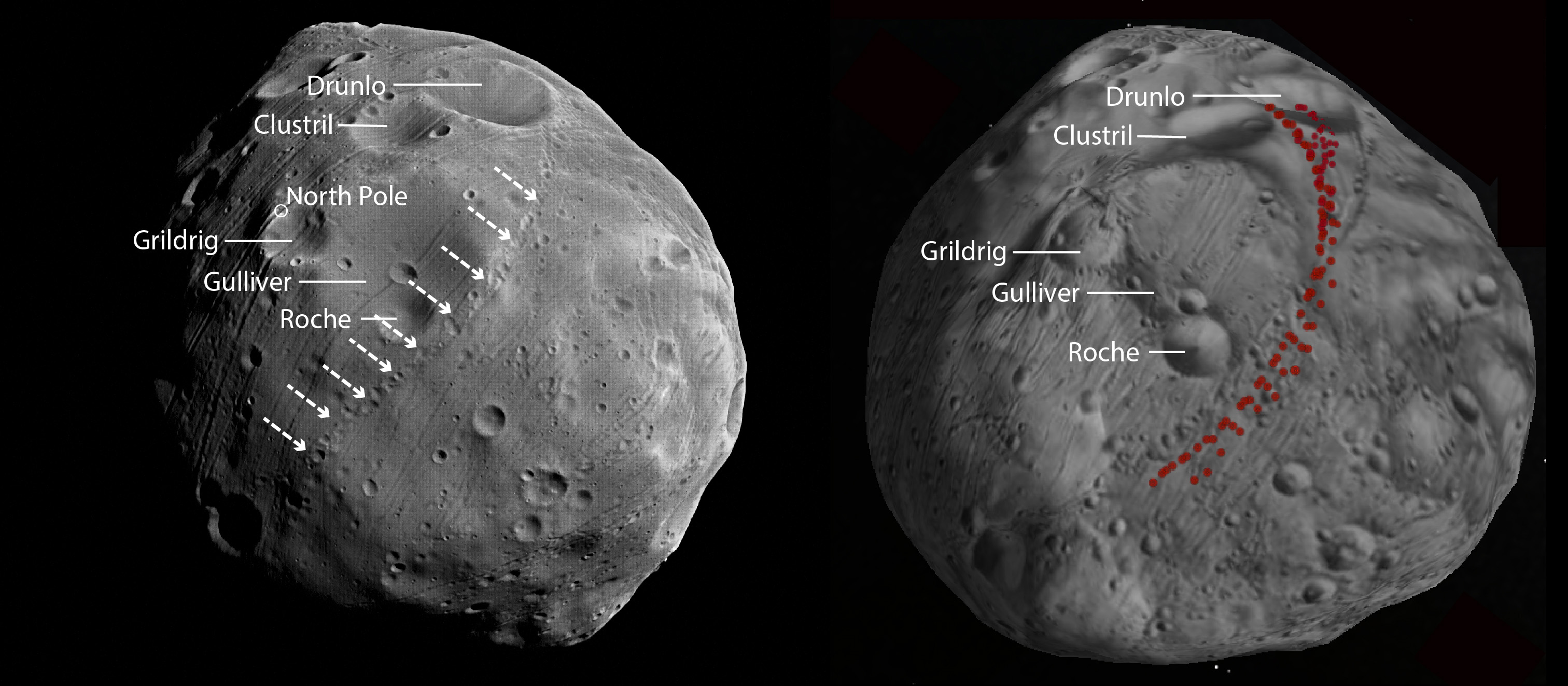The Grooves of Phobos: A Mars Moon Mystery in Pictures
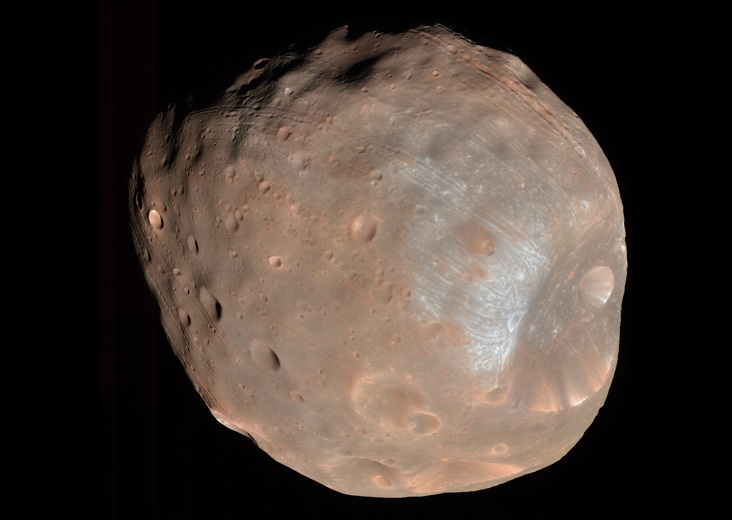
Meet Phobos
Phobos is one of the two moons that revolve around Mars. It's a lumpy, crater-filled pile of rubble that measures only 10 by 14 by 11 miles (17 by 22 by 18 km). Phobos also orbits closer to Mars than its smaller counterpart, Deimos, at an altitude of only 3,700 miles (6,000 kilometers). This photo was taken by the High-Resolution Stereo Camera on board ESA's Mars Express in Jan. 2008. Read our full story here: Weird Grooves On Mars' Moon Phobos Traced to Asteroids
First Photos Reveal Grooves
NASA's Viking 1 orbiter, one of the first spacecraft to go to Mars, took this photo of Phobos on June 10, 1977. Images from the Vikings revealed streaks and craters all over the surface of Phobos. Astronomers believed these long, parallel grooves were stress fractures, or 'stretch marks' caused by Mars' gravity. ['Stretch Marks' on Phobos Show Martian Moon Is Falling Apart]
Read our full story here: Weird Grooves On Mars' Moon Phobos Traced to Asteroids
The Surface Gets Stranger
Later images of the Martian moon revealed a second family of grooves. On July 23 2008, the High Resolution Stereo Camera on board the ESA’s Mars Express took the highest-resolution full-disc image yet of the surface of the moon Phobos. These images revealed a smaller and less noticeable set of grooves that didn't line up parallel to the tidal grooves. Read our full story here: Weird Grooves On Mars' Moon Phobos Traced to Asteroids
Dominated by a Crater
The massive Stickney Crater is the largest feature on the surface of Phobos. It stretches almost 6 miles (9.5 kilometers) at one end of the elongated moon, giving it the shape of a partially-deflated football. This color-enhanced photo was taken by the High Resolution Imaging Science Experiment (HiRISE) on NASA's Mars Reconaissance Orbiter. Read our full story here: Weird Grooves On Mars' Moon Phobos Traced to Asteroids
Grooves on Phobos
Researchers suggested that the grooves were not caused by gravity at all. Instead, they thought they might be chains of little impact craters. But these impact craters aren't tiny asteroids or comets. Rather, the craters came from Mars' rubble striking the moon when large impacts happened on the planet itself. Read our full story here: Weird Grooves On Mars' Moon Phobos Traced to Asteroids
Modeling Moon Dirt In Orbit
More recently, researchers at the University of California in Santa Cruz decided to test a different theory: What if the rubble that created these little crater chains wasn't from Mars, but from Phobos' own surface? This illustration demonstrates the sequence of events that they believe formed these craters on the Martian moon. (Orbital illustrations not drawn to scale)
Read our full story here: Weird Grooves On Mars' Moon Phobos Traced to Asteroids
Predicting Patterns of Crater Chains
Michael Nayak and Erik Asphaug at the University of California, Santa Cruz performed some computer simulations to test their hypothesis about the origins of Phobos' grooves. A computer simulation modeled primary impacts, or initial strikes that create major craters and send stuff flying into space, followed by the secondary and sesquinary impacts of the moon's rubble returning back to the surface. The crater chain pattern on the left matches the chain of craters their simulation predicted (right). Read our full story here: Weird Grooves On Mars' Moon Phobos Traced to Asteroids
Breaking space news, the latest updates on rocket launches, skywatching events and more!

Hanneke Weitering is a multimedia journalist in the Pacific Northwest reporting on the future of aviation at FutureFlight.aero and Aviation International News and was previously the Editor for Spaceflight and Astronomy news here at Space.com. As an editor with over 10 years of experience in science journalism she has previously written for Scholastic Classroom Magazines, MedPage Today and The Joint Institute for Computational Sciences at Oak Ridge National Laboratory. After studying physics at the University of Tennessee in her hometown of Knoxville, she earned her graduate degree in Science, Health and Environmental Reporting (SHERP) from New York University. Hanneke joined the Space.com team in 2016 as a staff writer and producer, covering topics including spaceflight and astronomy. She currently lives in Seattle, home of the Space Needle, with her cat and two snakes. In her spare time, Hanneke enjoys exploring the Rocky Mountains, basking in nature and looking for dark skies to gaze at the cosmos.
